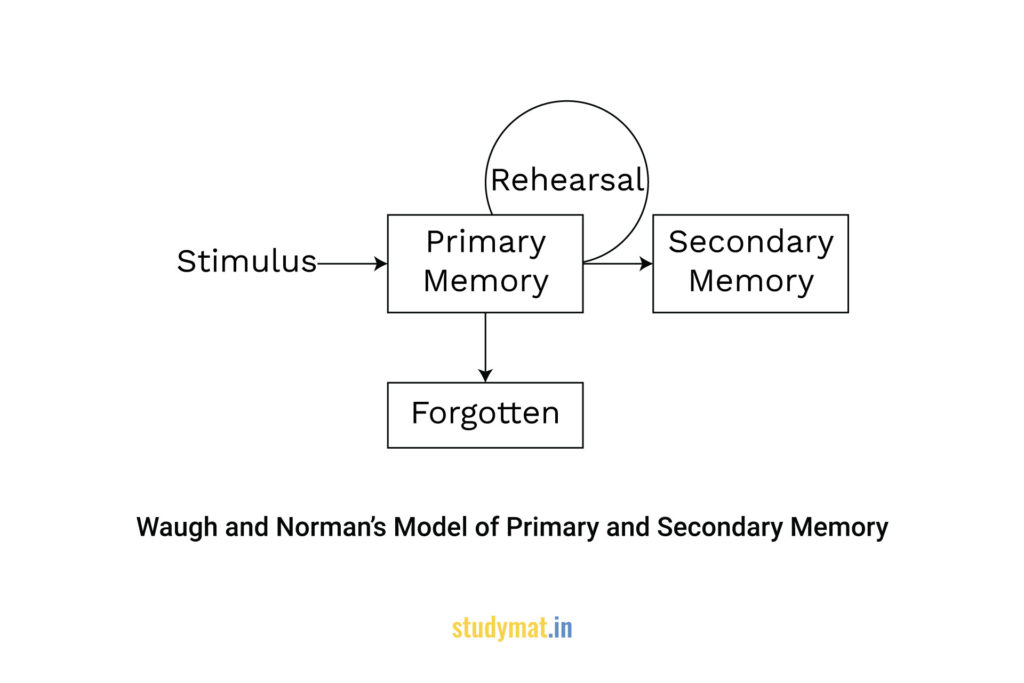In this article, we will Describe Waugh and Norman’s Model of Memory.
Waugh and Norman’s Model of Primary and Secondary Memory :
Waugh and Norman developed (1965) the first modern behavioural model to travel down memory lane. Their concept of primary memory has served as a departure point for many modern theories. Waugh and Norman’s memory theory is dualistic; primary memory (PM), a short-term storage system, is conceptualized as being independent of secondary memory (SM), a longer-term storage system. Waugh and Norman borrowed freely from William James’s dichotomy of primary and secondary memory and illustrated their theory using the model shown below. It encouraged the memory metaphor of boxes in the head that soon multiplied in cognitive psychology literature.

What Waugh and Norman did that James never tried was to quantify properties of primary memory. This short-term storage system was taken to have very limited capacity. So the loss of information from it was postulated to occur not as an easy function of time, however (once the storage capacity was exhausted) by displacement of previous items by new ones. PM might be conceptualized as a storage compartment much similar to a vertical file. During that which information is stored in a slot or, if all the slots are filled, displaces an item occupying one of the slots.
Related Search:
Explain the Key Issues in the Study of Cognitive Psychology.
Discuss the Perceptual Blocks to Problem Solving.
Waugh and Norman traced the fate of items in PM by using lists of sixteen digits. That was read to subjects at the rate of one digit per second or four digits per second. The purpose of presenting digits every second or quarter second was to determine whether forgetting was a function of decay or interference in PM.
If forgetting was a function of decay, then less recall might be expected with the slower rate (one digit per second). If forgetting was a function of interference in PM, then no difference in recall might be expected according to the presentation rate. At both presentations, rates presented a similar amount of information. Waugh and Norman’s logic allows occurring at the same time for decay. It might be argued that even at one item per second, subjects would allow additional experimental information to enter their PM. But later experimentation (Norman, 1966) during which presentation rates varied from one to ten digits (for a given period), produced data consistent with a rate of forgetting expected from the original model. The rate of forgetting for the two presentation rates is similar. Interference looks to be a bigger factor than decay in forgetting in PM.
Related Search:
Compare and Contrast the Behaviouristic and Innate Theory of Language Acquisition.
Discuss the Various Approaches to Problem Solving.
Waugh and Norman’s system makes good sense. PM holds verbal information and is available for exact recall; this is true in our ordinary conversation. We can recall that last part of a sentence we’ve just heard with complete accuracy, although we were hardly paying attention to what was said. However, to recall the same information sometime later is not possible unless we rehearse it, which makes it available through SM.
Follow us:
If you like this article, you can Follow us on Facebook.
Also, you can Join our Official Facebook Group for QnA Sessions and Discussions with the worldwide IGNOU community.

